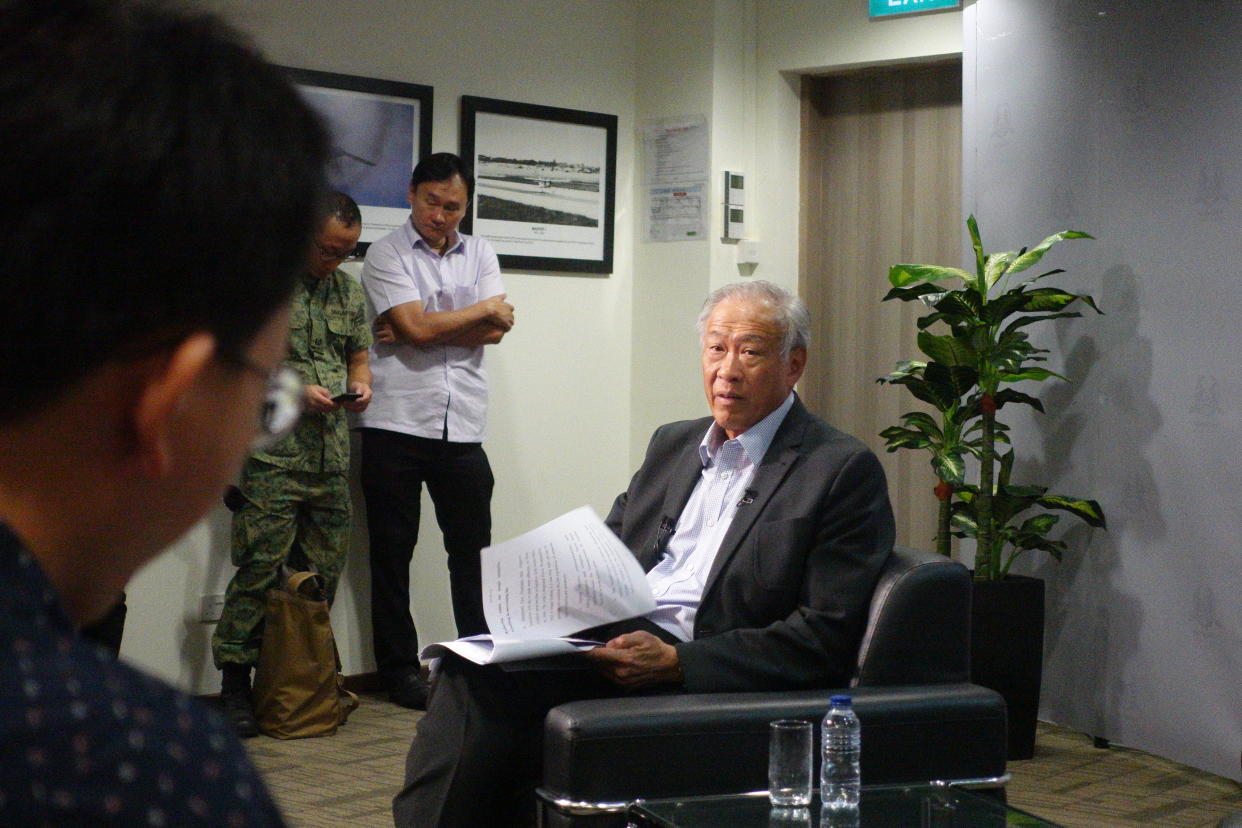SAF preparing 'stout defence' of Singapore for another generation: Ng Eng Hen

SINGAPORE — The Singapore Armed Forces (SAF) is adapting to challenges such as a reduced fighting force and the increasing tide of nationalism, in order to a mount a “stout defence” of the Republic for another generation, said Defence Minister Ng Eng Hen.
Speaking to reporters on Friday (28 June), Dr Ng quoted former US defence secretary Robert Gates, who once told West Point cadets, “When it comes to predicting the nature and location of our next military engagements since Vietnam, our record has been perfect: We’ve never once gotten it right.”
Dr Ng noted, “If (the world’s largest military) find(s) difficulty in getting it precise, getting it right, I think it gives us pause for Singapore… I think we want to think hard and reflect deeply on this question: How do you prepare a stout defence of Singapore for another generation?”
And while today’s SAF has come a long way, participating in peacekeeping operations, humanitarian assistance disaster relief (HADR) and other multilateral operations, Dr Ng warned, “There’s always a danger of complacency and sometimes hubris, where you believe that the problems you have looked at for 50 years or more, that you have the solutions.”
Internal challenges

In a wide-ranging interview with reporters ahead of SAF Day, the 60-year-old stressed that the SAF has worked hard to address its “greatest internal challenge”: the decline in the numbers of servicemen. Due to the country’s low birth rate, by 2030, Singapore will face a one-third reduction in its fighting force.
To that end, the SAF has used technology to make up for the shortfall in numbers, with platforms that require fewer men but have greater combat power. For example, the next-generation howitzer needs only three men to operate as opposed to the current nine, while the Spyder air defence system only takes four men and 15 minutes to deploy, compared with 15 men and one hour for the old Rapier system.
Dr Ng also pointed to the locally developed Hunter Armoured Fighting Vehicle, the SAF’s first fully digitalised platform.
The newer platforms and weapons also use more automation and require less physical strength. For example, Dr Ng noted that combat engineers were seen as a “garang” (Malay for fierce) vocation, as “brute force” was needed to shift things. Today, self-deploying bridges are used instead of manual labour.
There have also been efforts to match servicemen to their skills, such as deploying those with diplomas in nursing to be combat medics, while the new $900 million SAFTI City also makes full use of technology to provide enhanced training. It will have, among other things, advanced training simulations and urban training structures.
External challenges
Dr Ng also noted a myriad of factors outside of the country, such as the strategic competition between the United States and China. A rising tide of nationalism also increases the potential for disputes, while the centre of gravity for terrorist attacks has been shifting away from the Middle East.
There is also the transnational threat of cyber warfare. In response to this, the SAF is looking to establish a fourth service in a new cyber formation to ramp up its capabilities in the cyber realm, said Dr Ng.
A major recruitment drive for regulars with cyber expertise has also begun, while the Cyber NSF Scheme has also roped in full-time national servicemen. No details were provided as to how much money or resources will be dedicated to this drive.
In March 2017, Dr Ng told Parliament that the SAF’s cyber defenders will be part of the new Defence Cyber Organisation, which will also house the Cyber Defence Group. The goal is to have about 2,600 servicemen on board in about 10 years.
He concluded, “This is serious business, in terms of building a stout defence for the next generation, and we must guard against being too rigid in thinking of what our next challenge is.”
Dr Ng’s comments come in a year in which the SAF’s reputation has been tested by the training death of local actor and serviceman Aloysius Pang. Together with the deaths of servicemen Liu Kai and Gavin Chan in previous years, many questions were raised about the SAF’s training practices and safety record.
The Republic of Singapore Navy has also been at the forefront of efforts to resolve a maritime dispute between Singapore and Malaysia about overlapping port limits.
Related stories:
Aloysius Pang's death: COI proposes SAF safety enhancements
COMMENT: Are we seeing a changed Ministry of Defence?
61% of Singaporeans say SAF not open enough about training-related casualties: poll



